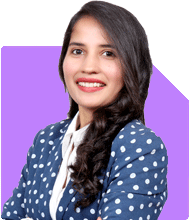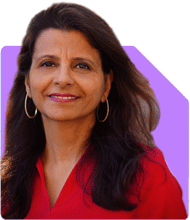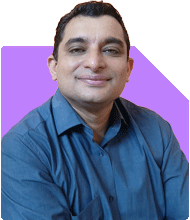Hi Sir, My Age is 43 years, I had a son and I want to retire at the age 55 years, Currently my investment is MF - 25 lac; currently SIP 25000 per month; no index fund invested in flexi cap, large cap, small cap, IT, digital, pharma and health care; debt, EPF 5 lac, NPS 1.5 lakhs, 15 lac in FD interest rate 9.5, I am also invest in stocks mkt since 2018, only long term stock, having portfolio on 40 lakhs in blue chips. Have rental income from my home around 18-20 thousands per month. Term plan, healthy insurance taken, family full treatment cover from my hospital. I want to 50 thousand monthly income after my retirement, please suggest
Ans: You have done many things right already. You started early, invested across categories, and built assets. You also have income from rent, health insurance, and a term plan. At 43, you have 12 more years to plan before retirement. Your monthly retirement goal is Rs.50,000, which is realistic. A focused and disciplined plan from now can easily help you achieve this.
Let’s take a 360-degree view of your situation and goals.
» Understand Where You Stand Now
– Your age is 43 years.
– Retirement goal age is 55.
– 12 years left to grow your assets.
– Monthly SIP is Rs.25,000.
– Mutual fund value is Rs.25 lakhs.
– Equity stocks worth Rs.40 lakhs.
– EPF is Rs.5 lakhs.
– NPS is Rs.1.5 lakhs.
– FD is Rs.15 lakhs at 9.5% interest.
– Rental income is Rs.18,000–20,000 monthly.
– Term plan and full health cover are in place.
– You’ve covered insurance risks and health expenses already.
This is a strong financial structure. You have spread your risk smartly.
» Define the Core Retirement Goal
– Your goal is to get Rs.50,000 monthly after retirement.
– That is Rs.6 lakhs annually.
– Your portfolio should generate this amount safely.
– It must also beat inflation.
– So plan for slightly higher than Rs.50,000 in future.
– You need assets that give steady, tax-efficient income.
– Focus now must be on building this future income base.
» Assess and Optimise Existing Investments
– Mutual fund investments are Rs.25 lakhs now.
– Continue SIP of Rs.25,000 monthly.
– Review SIP portfolio every year.
– Make sure it includes diversified equity funds.
– Keep a balance between large, flexi, and small cap.
– Continue pharma, digital, and IT only if performance is consistent.
– These sectors are cyclical, not core retirement tools.
– Shift gradually towards balanced funds post age 50.
– Avoid index funds completely.
– Index funds mirror markets and do not protect downside.
– Index funds fail in volatile or sideways markets.
– Actively managed funds have higher return potential.
– Professional fund managers manage risk better.
– Direct mutual funds should also be avoided.
– Direct plans lack MFD support and guidance.
– Use regular mutual funds via a Certified Financial Planner-guided MFD.
– This ensures proper tracking and corrections.
» Equity Stock Holdings Evaluation
– Stocks are worth Rs.40 lakhs.
– You invested since 2018, which gives 6+ years’ experience.
– Continue holding quality blue-chip stocks.
– Avoid frequent buying or selling.
– Stocks should not be more than 35% of retirement corpus.
– As you approach age 50, shift part of stocks to mutual funds.
– Mutual funds give better liquidity and diversification.
– Stocks can be volatile in short term.
– Regular review is important every 6 months.
– Keep stocks only in companies with high dividend yield and strong cash flows.
» EPF and NPS Outlook
– EPF balance is Rs.5 lakhs.
– This is safe and offers guaranteed interest.
– Don’t withdraw EPF early.
– Let it grow till retirement.
– Keep contributing if possible through employment.
– NPS is Rs.1.5 lakhs now.
– You can continue yearly contributions.
– But don’t rely on NPS for full retirement.
– NPS comes with partial annuity requirement.
– It also has limited withdrawal flexibility.
– Keep it as a secondary tool only.
» Review of Fixed Deposit Allocation
– FD of Rs.15 lakhs at 9.5% is very rare.
– Check if rate is locked or temporary.
– After maturity, don’t reinvest full in FD again.
– FDs are not tax-efficient.
– Interest is fully taxed as per your slab.
– FD must only cover short-term needs or emergency.
– For long-term, mutual funds are better.
» Rental Income Management
– Rent is Rs.18,000–20,000 per month.
– Keep this for post-retirement cash flow.
– Don’t count on major hike in rent.
– Use this income to reduce retirement withdrawal pressure.
– Include property maintenance cost every year.
– Don’t depend fully on rental income for future goals.
– Treat it as support income, not core income.
» Boost Retirement SIP From Now
– You have 12 years to retire.
– Increase your SIP from Rs.25,000 to Rs.35,000 minimum.
– If possible, raise by 10% every year.
– Use salary increments or bonuses to boost SIP.
– Start a dedicated SIP only for retirement.
– Don’t mix other goals like child education or marriage.
– Separate retirement funds give clarity and focus.
– Long-term compounding will support your goal better.
» Portfolio Structuring From Age 50
– Slowly reduce equity risk after 50.
– Don’t exit equity fully.
– Shift part into hybrid and balanced mutual funds.
– Maintain 40–50% equity even after 55.
– Use debt funds, not FDs, for steady income.
– Keep 1 to 2 years’ expense in liquid or short-term funds.
– This avoids selling during market downturns.
– Balance safety and growth to protect capital.
» Build Income Buckets After Retirement
– Plan retirement corpus in 3 buckets:
Short-Term:
– Keep 1–2 years' monthly needs in liquid funds.
– Use for day-to-day monthly expenses.
Mid-Term:
– Invest 5–7 years' worth in balanced funds.
– Withdraw from here when short-term gets empty.
Long-Term:
– Keep 10+ years' needs in equity or hybrid funds.
– This grows to beat inflation.
– Shift to mid bucket after 3–5 years.
– This structure ensures stability and income.
– Avoid stress during market corrections.
» Tax Planning and Withdrawal Strategy
– Equity mutual fund LTCG over Rs.1.25 lakhs taxed at 12.5%.
– STCG in equity funds is taxed at 20%.
– Debt mutual fund gains taxed as per your income slab.
– Plan your withdrawal amounts wisely.
– Withdraw only what you need.
– Don’t exit big chunks in one year.
– Spread withdrawals to save tax.
– Rental income is added to taxable income.
– Adjust other income accordingly.
– FDs give taxable interest, reduce this portion post-retirement.
– Use mutual funds for tax-efficient growth.
» Stay Consistent With Annual Reviews
– Every year, review goals, SIP, and portfolio performance.
– Markets will not behave the same every year.
– Small corrections in portfolio can improve results.
– Rebalance fund allocation every 12 months.
– Re-assign risk level based on age.
– Use support of Certified Financial Planner for portfolio corrections.
» Avoid New Risky or Emotional Investments
– Don’t enter into crypto or high-risk small cap bets now.
– Stay focused on long-term plan.
– Don’t chase short-term returns.
– Stick to large cap, flexi cap, and quality stocks.
– Never invest based on social media trends.
– You are in wealth preservation phase now.
– Growth must be safe and sustainable.
» Educate Family and Share Plan
– Let your spouse know about all your investments.
– Share passwords and nominee details.
– Make a Will once retirement corpus is built.
– Keep documentation ready and easy to access.
– Family must not struggle to understand your finances.
» Finally
– You have a strong and diversified portfolio already.
– At 43, with 12 years left, your target is practical.
– Rs.50,000 monthly retirement income is reachable.
– Just increase SIP and review assets yearly.
– Avoid FDs for long-term wealth.
– Avoid index funds and direct mutual funds.
– Use regular funds via MFDs with CFP guidance.
– Reduce stock risk gradually after age 50.
– Structure assets in income buckets post retirement.
– Make withdrawals tax-efficient.
– Stay disciplined and consistent.
– You are well on track.
– Just tighten your SIP and allocation path now.
– Your retirement goal is secure with this approach.
Best Regards,
K. Ramalingam, MBA, CFP,
Chief Financial Planner,
www.holisticinvestment.in
https://www.youtube.com/@HolisticInvestment

























